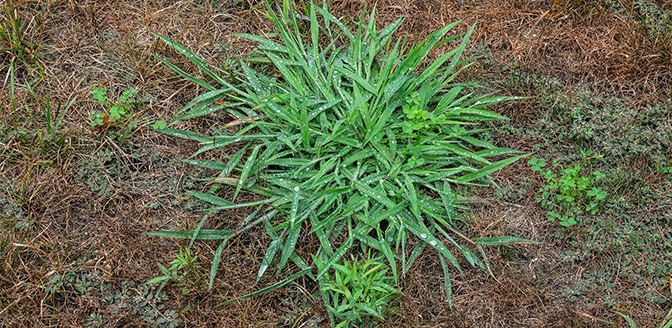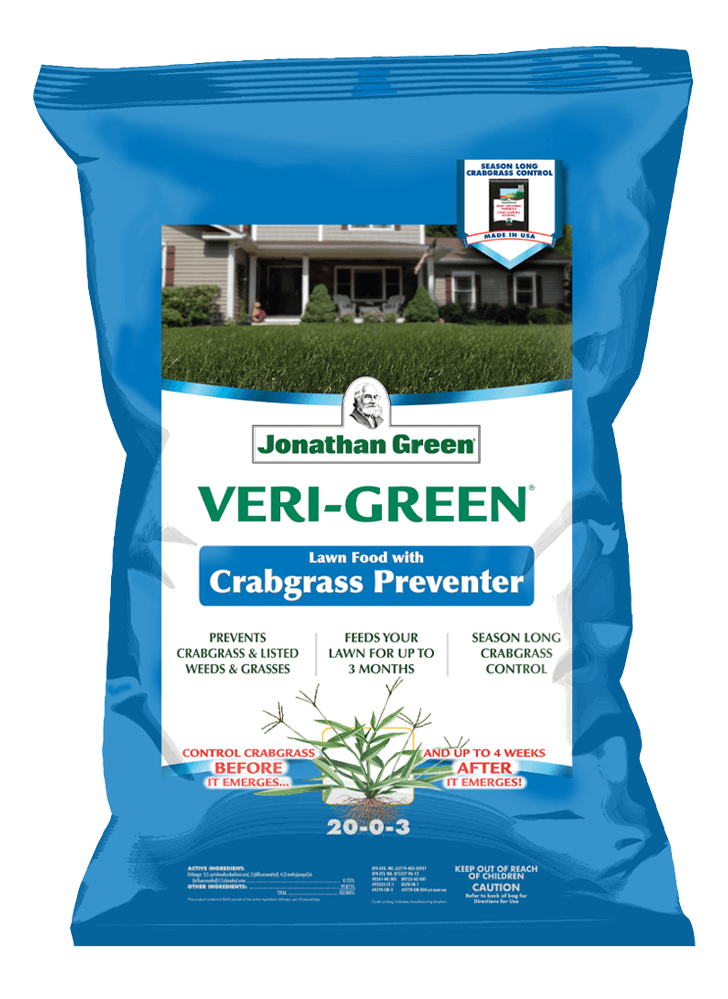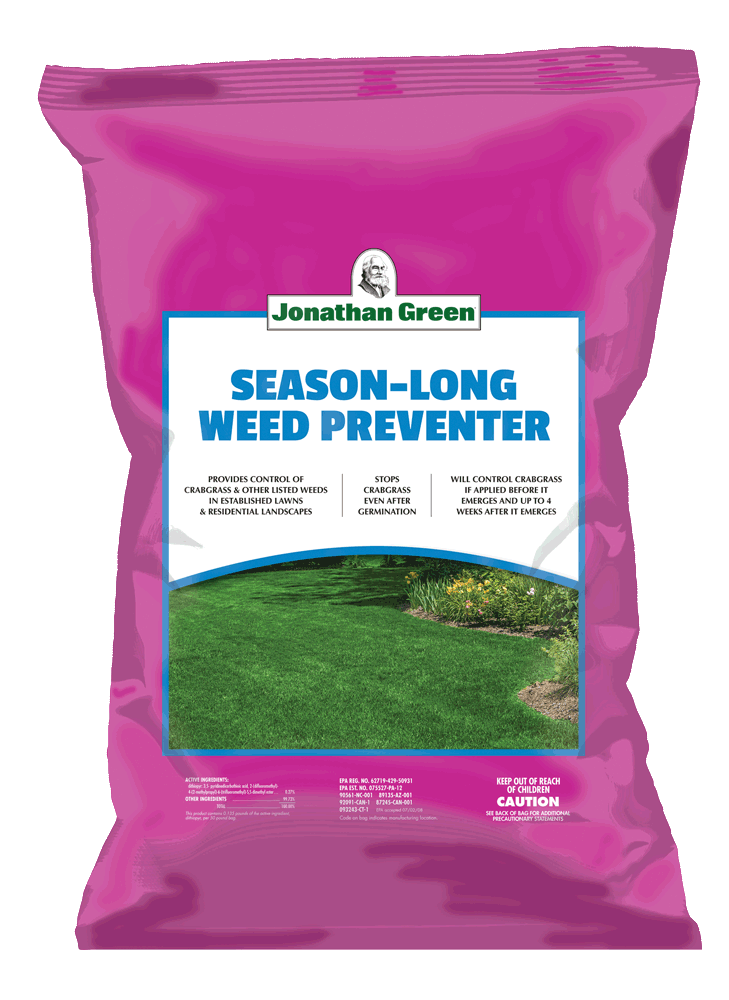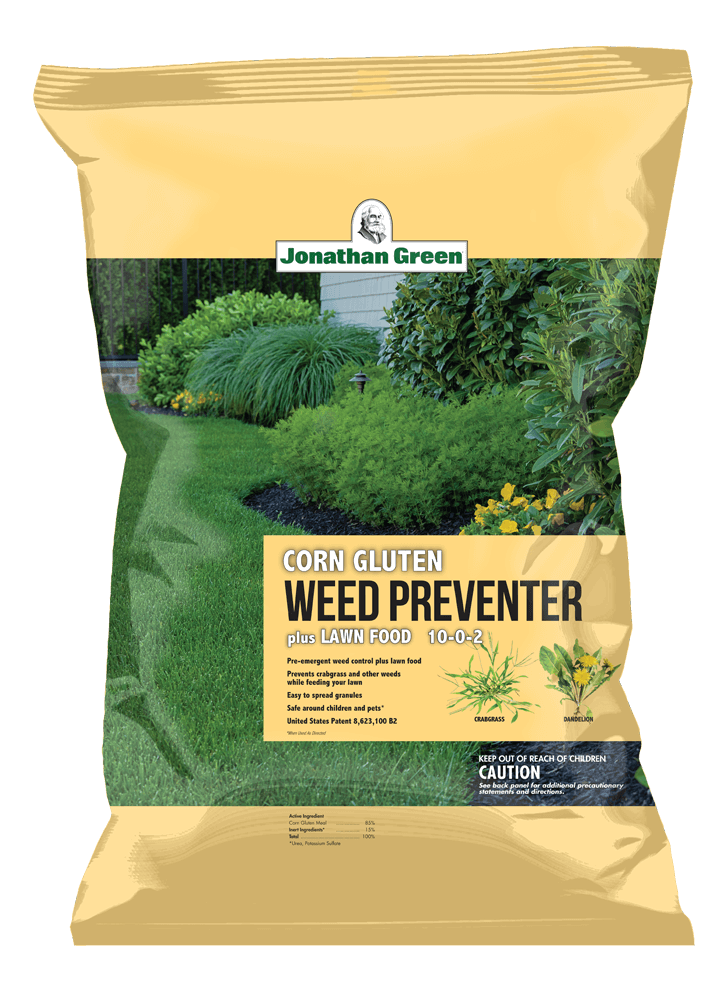What’s the Difference Between Natural and Synthetic Crabgrass Control?
When it comes to pre-emergents, the main goal is to eliminate crabgrass from the lawn, however there are many ways to go about this. In this article we break down the difference between synthetic and natural crabgrass control methods so you can choose which one is best for you and your lawn.
Dithiopyr, which is commonly known as Dimension, is found in the following Jonathan Green products: Veri-Green Crabgrass Preventer plus Lawn Fertilizer and Season-Long Weed Preventer. These products contain Dimension because of its ability to kill crabgrass both before and after it germinates and its shorter residual period. Alternatively, our Corn Gluten Weed Preventer plus Lawn Food uses a natural by product of milling corn as a control method. In order to fully understand these active ingredients, we’ll go through how they work, application timing, and the pros and cons of each of them.
Mentioned Products
How Dimension and Corn Gluten Work
Dimension is a barrier based herbicide, meaning once applied and watered in, it forms a barrier at the soil level. When the crabgrass germinates, it comes in contact with this barrier and the chemical prevents the plant from further growth. This synthetic herbicide works best when watered in, so plan to apply when you can water the lawn afterwards. About a half of an inch of water is sufficient to activate the product.
Also, be sure to wait at least 48 hours to mow after applying Dimension. Any disturbance of this barrier after it has been established can adversely affect its efficacy. Aerating, dethatching, vigorous raking, dogs digging holes, or heavy traffic are all factors that would be considered disturbances. So if you are planning on raking up dead material or dethatching in the spring, then it is best to do so before applying a pre-emergent.
Corn gluten on the other hand works a little differently. Instead of preventing crabgrass from germinating, it inhibits the newly germinated seed from growing roots. Meaning that seeds can germinate, but due to its lack of roots will die off as long as the soil is dry enough. However, if the soil stays very wet, the crabgrass has a chance of recovering and growing roots, so after the product is watered in, let the ground dry out for the next few days after applications.

When to Apply
The best time to apply crabgrass preventer is in the spring, because that’s when crabgrass germinates. Crabgrass preventer, like many weed controls, affects not only crabgrass, but also regular turfgrass, which is why you must plan your crabgrass preventer around your seeding schedule. It is best to wait 90 days before seeding after applying Dimension or Corn Gluten.
If you wish to seed in the spring then you have two options:
- Apply a pre-emergent early in spring around March and then wait three months to seed.
- Seed early in the spring and then wait at least 30 days or 2-3 mowings of the newly seeded areas to apply crabgrass control.
We typically recommend applying crabgrass control in the spring and then waiting for the optimum time for seeding which is in the fall. If you are seeding in the fall, then it is possible to apply crabgrass control twice. Once in the early spring, and then again three months later in May or June, to prevent crabgrass all summer long.
Depending on the degree of the crabgrass infestation, multiple applications may be needed throughout the spring and early summer. If you apply a pre-emergent in summer, make sure to use one without fertilizer, like our Season-Long Weed Preventer in order to avoid burning the lawn.
Pros and Cons Dimension (Dithiopyr)
- Shorter residual period (than other synthetic controls)
- Controls crabgrass both before and after it germinates
- Cannot seed for three months after applications
Dimension has a shorter residual than other synthetic options of about 90 days, which is why we recommend waiting three months before seeding a lawn that has been treated with crabgrass preventer in the same season. The main selling point for dimension is that it is both a pre-emergent AND post-emergent crabgrass control (up to about the 3rd tiller stage). This is also why it is typically applied later in the spring.
Pros and Cons of Corn Gluten
- Better for the environment than synthetic controls
- Shorter residual period (than most synthetic controls)
- Controls crabgrass only before it germinates
- Cannot seed for three months after applications
Corn gluten is a byproduct of the corn milling process and has been used for years to prevent weeds. Note that it only has prevention qualities, and will not kill the existing weeds in your lawn. However, there are positives to using a natural product. Firstly, it is better for the environment, meaning your pets and kids are safe to use the lawn directly after use! It also controls many broadleaf weeds on top of its crabgrass-preventing abilities. Similar to the synthetic chemicals, corn gluten will affect the germination of turfgrass so make sure to wait at least 60-90 days to seed your lawn after applying crabgrass preventer. The reason corn gluten is a bit more complicated than synthetic controls is because it usually takes more than one application to be effective, meaning that you would have to seed in the fall if you apply this pre-emergent in the spring and summer. Also, large rain storms can wash this product away, so make sure to apply this product when rain is not expected. If heavy rain does occur within 48 hours of application, then you must re-apply.
Jonathan Green Crabgrass Preventers

Conclusion
Out of synthetic weed controls, we suggest using one with Dimension. Its shorter residual period and its pre-emergent AND post-emergent crabgrass control make it an ideal choice for homeowners and professionals. The best crabgrass preventer from Jonathan Green which contains both Dimension and lawn food is Veri-Green Crabgrass Preventer plus Lawn Fertilizer. It will not only prevent new grass and kill existing infestation, but it will also green up the lawn for three full months. Just remember to wait 90 days after applying to seed.
At Jonathan Green, however, we believe that as with all lawn pests, the best crabgrass prevention method is a thick healthy lawn. Proper lawn care practices such as mowing height, watering, fertilizing, adjusting soil pH, and using superior grass seed varieties will help you to grow a beautiful healthy lawn year after year.


